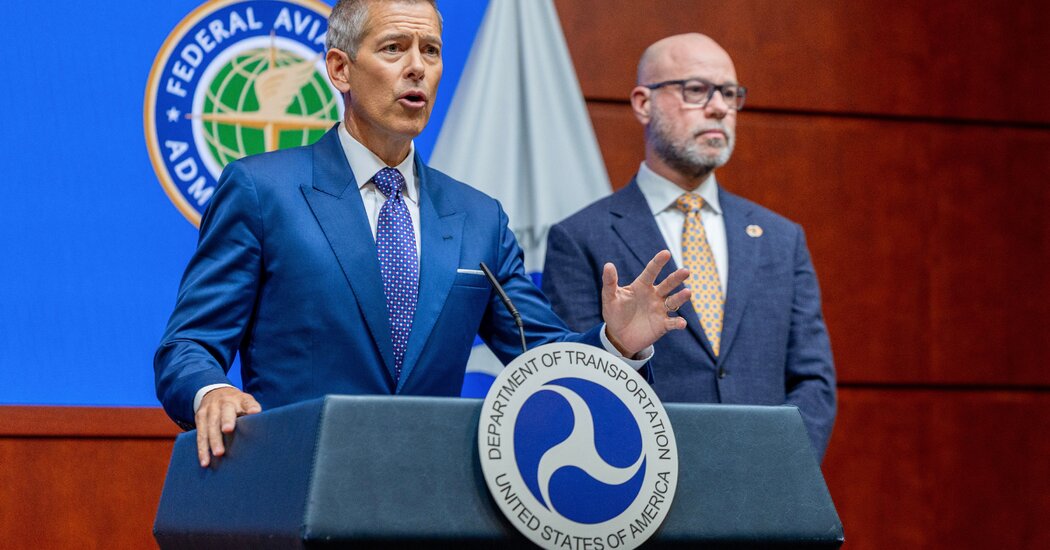Copyright The New York Times

Sean Duffy, the transportation secretary, and Bryan Bedford, the administrator of the Federal Aviation Administration, announced on Wednesday that air traffic in 40 key markets would be reduced by 10 percent by Friday if there was no resolution to the government shutdown before then. “We are going to proactively make decisions to keep the airspace safe,” Mr. Duffy told reporters at a news conference, predicting that the restrictions would result in some cancellations, but adding those would be necessary to “alleviate the pressure” on air traffic controllers in high-traffic areas. The F.A.A. is expected to announce what areas will be affected on Thursday. Mr. Duffy has been sounding an alarm about the pressures on the F.A.A.’s force of certified air traffic controllers, most of whom were already working overtime shifts to compensate for the fact that about 3,000 of 14,000 positions were vacant before the shutdown, which they are required to work through without salary. Mr. Duffy warned earlier this week that if the shutdown went on, the F.A.A. could close parts of the national airspace to traffic. His Wednesday announcement marked a step in that direction, as he and Mr. Bedford warned that if staffing issues worsened, more restrictions could be implemented. “We’re not going to wait for a safety problem to truly manifest itself when the early indicators tell us we can take action today,” Mr. Bedford said, adding that they planned to work with the airlines to draw back schedules over the next 48 hours. The reductions will include restrictions on space launches and aircraft operating under visual flight rules, Mr. Duffy and Mr. Bedford said, explaining that those operations complicated the already difficult jobs of air traffic controllers. Mr. Bedford, a 35-year veteran of the aviation industry, added that the moves were without precedent in his experience — but said the situation was also without precedent. “We’re in new territory in terms of government shutdowns,” he said. But he added that in the wake of the January midair crash outside Ronald Reagan National Airport, surveillance of the national airspace had also changed from what it was even a year ago. “These are unusual times, and we look forward to a time when we can get back to business as usual,” Mr. Bedford said.



